
There has always been a controversy regarding whether Sanskrit was the original language, as some feel, or whether there was what has been called a Proto-Indo-European (PIE) language that was the start of all other languages, which is now said to have disappeared. So let us take a look at this.
First of all let us face the fact that Sanskrit is the language that composes what has been recognized as the earliest texts on the planet, such as the Rig Veda and the otherVedas. Secondly, it is also known that it was an oral tradition long before it became a written language. This was because the great sage Vysadeva, who compiled the main portions of the Vedic literature, could foretell that the memory of mankind would soon be greatly reduced, compared to what it had been. So there would be a need for the texts to be in written form. Thirdly, the sophistication of the language, its grammar, syntax, and so on, was highly developed. So it had to have been in existence for some time, long before most other languages, or even any other language that appeared later on, all of which were far less developed than Sanskrit. So, how could there have been a Proto-Indo-European (PIE) language that was the basis of forming Sanskrit that had to have been almost as sophisticated as Sanskrit that is said to no longer exist?
SANSKRIT AND THE PROTO-INDO-EUROPEAN LANGUAGE ISSUE
So how did the idea come about that there must be a Proto-Indo-European language that was the origin of Sanskrit, Greek and Latin?
It all started when certain researchers started to see similarities between the main languages, such as Sanskrit, Greek and Latin. Presently, there are 439 languages and dialects, of which half is considered belonging to the Indo-Aryan subbranch. Twelve languages and their derivatives are considered to be Indo-European, including Spanish, English, Portuguese, Russian, German, French, Italian, Hindi, Bengali, Punjabi, Marathi, and Urdu. And most of the languages in India are known derivatives of Sanskrit.
It was as early as 1583 when Thomas Stephens, an English Jesuit missionary in Goa started to recognize similarities between Sanskrit, Greek and Latin. Then in 1585, Filippo Sassetti, an Italian merchant who had traveled to India, also wrote about various similarities. Next was the Dutch scholar Marcus Zuerius van Boxhorn, in 1647, who noted the similarities among these languages, including Dutch, Albanian, Greek, Latin, Persian, Slavic, Celtic and Baltic languages. He was the one who first proposed that they must all derive from a common source language, which he called Scythian. Then in the late 1760s Gaston Coeurdoux made observations of the same type, with a study of Sanskrit, Latin and Greek. There were others who had done the same thing. However, none of these men aroused much notice in their research.
It was in 1786 when Sir William Jones started giving talks about the similarities between Sanskrit, Greek and Latin, along with Celtic, Gothic and Persian languages, and suggested that there was a relationship between them. That is when people started to take notice.
It was in 1813 when Thomas Young first coined the phrase “Indo-European” to describe this relationship and family of languages, which then became the standard “scientific” term. Then it was Franz Bopp who produced a study of these languages, called Comparative Grammar between 1833 and 1852, that seemed to verify this relational theory. This was the beginning of the Indo-European studies as part of an academic curriculum. This went further to August Schleicher’s Compendium in 1861, and then Karl Brugmann’s Grundriss in the 1880s. From there it went further into what can be called modern Indo-European studies.
We could explain how various languages are considered part of a family or group and subgroups, or branches and subbranches, through genetic identification, or what can be called shared innovations, or their structure and phonology, or what is called their evolutionary history. But we won’t indulge in all this analysis.
In any case, we now have the “Indo-European Family” of languages, which is a study of the commonalities of numerous languages, rather than the attempt to try to understand what was the original or “Proto-Indo-European” language, or the seed from which all other languages began, starting with Sanskrit, Greek and Latin. So this is the difference when you begin talking about Indo-European language: Are you talking about the “family,” in which case you could certainly be talking about many languages, or are you talking about what could be the original, or at least the search for the original seed language of all others? In the latter case, such a language still has not yet been identified, and maybe never will.
WHERE WAS THE ORIGIN OF THE PROTO-INDO-EUROPEAN LANGUAGE?
So if there was to be a Proto-Indo-European (PIE) language, which means the seed language of all others, it had to come from somewhere. So where and what people developed it, and how did it spread?
It was speculated that the original Indo-European people go back to 5000 BCE. These were later called the Kurgan people, who lived northwest of the Caucasus and north of the Caspian Sea. These were considered to be semi-nomadic people. The word kurganactually means “barrow” or “artificial mound” in Turkic and Russian. The Kurgan hypothesis was first formulated in the 1950s by Marija Gimbutas. In any case, it was figured that these people abandoned their homeland and started to migrate in different directions, taking their language with them, some arriving in Greece by 2000 BCE, and others to India in 1500 BCE. From there, the languages started to morph into varieties into what we find today as Greek, Sanskrit and Latin. This is known as the Kurgan Hypothesis, which basically means it is all speculation, or more diplomatically called a “model.”
Another theory is that the Proto-Indo-European language was spoken by a people who lived about 6000 years ago in the vicinity of the Pontic Steppe, north of the Black Sea and east to the Caspian, near where the Scythians were supposed to have lived. It is then suggested that this PIE language faded away before there was the invention of a writing system, and then the Indo-Europeans expanded from the homeland, thus causing the evolution of the language into various dialects and incomprehensible daughter languages. These languages also evolved, giving birth to each of their own family of languages.
We also have the Anatolian Hypothesis. This theory, proposed by archaeologist Colin Renfrew at Cambridge University in 1987, holds that the Indo-European languages were spread not by marauding horsemen from the Caucuses but with the expansion of agriculture from Anatolia between 8000 and 9500 years ago. Radiocarbon analysis of the earliest Neolithic sites across Europe provides a fairly detailed chronology of agricultural dispersal. This archaeological evidence indicates that agriculture spread from Anatolia, arriving in Greece at some time during the seventh millennium BCE and reaching as far as the British Isles by 5500 years ago.
Renfrew maintains that the linguistic argument for the Kurgan theory is based on only limited evidence for a few enigmatic early Indo-European word forms. He points out that parallel semantic shifts or widespread borrowing can produce similar word forms across different languages without requiring that an ancestral term was present in a proto-language. Renfrew also challenges the idea that Kurgan social structure and technology was sufficiently advanced to allow them to conquer whole continents in a time when even small cities did not exist. Far more credible, he argues, is that Proto-Indo-Europeans spread with the expansion of agriculture – a scenario that is also thought to have occurred across the Pacific, Southeast Asia and sub-Saharan Africa.
So, as we can see, most of these ideas are but speculations that remain ever-changing, or, to put it plainly, inconclusive. Nonetheless, some people think that the original language has indeed already been identified, and has been around for thousands of years, if not longer, which is Sanskrit, which is the oldest of all sophisticated languages and from which all other major languages are but derivatives. Whatever factors for a Proto-Indo-European language the scholars are looking for can be found in Sanskrit. No other language has been identified to be older, or more influential in terms of texts written in Sanskrit, or how many other languages can be found that relate to it. So let us take a closer look at this.
THE SIGNIFICANCE OF SANSKRIT
As we can see, the above theories are all hypothesis, or speculations which have not and cannot decisively identify who were the original bearers of the primeval language, or what that language really was. Even if these are considered the general consensus in academia, these theories are still too full of discrepancies to be taken seriously when analyzed in detail.
However, we can offer other evidence that should be considered. Of course, we acknowledge the idea that there had to have been many kinds of minor languages scattered across the globe, but we also propose the idea that there was one major sophisticated language that had great influence around the world, and which spread in various forms throughout many civilizations, and which is the prime factor for the similarities that we find in many languages today.
The problem with PIE is that they feel it was never a written language but only the seed for those languages that later did become written languages. So there is no and never will be any direct evidence for it. But they try to find words that can be identified as remnants of the Proto-Indo-European language. This is where all of the speculations begin.
So, why is this important? Remember, it is a biased interpretation of this Proto-Indo-European (PIE) language issue that has helped continue the idea of the Aryan Invasion Theory (AIT). This is the idea, another hypothesis, that holds the premise that the Vedic Aryans came out of the Caucasus Mountain area only after they had already developed their language and writing, thus bringing with them the Vedic culture and the earlyVedas to the Indus-Sarasvati region of India. This promotes the view that India was not the homeland of the real Vedic culture, and that it was brought to them by outsiders, who some call invaders, who were more advanced. This has perpetuated a false history of India and its Vedic traditions for many years, ever since Max Muller came up with this theory, and this is what must be corrected. That is why there is also a need to correct this Proto-Indo-European issue. [For more information on the Aryan Invasion Theory, please see my article and Ebook entitled: The Aryan Invasion Theory: The Final Nail in its Coffin on my website at http://www.stephen-knapp.com.
THE ORIGINAL DEVELOPMENTS OF WRITING AND LANGUAGE IN INDIA
There has always been questions about where the original script came from, and how did it originate. However, in this regard, famous archeologist and specialist in scripts, A. B. Walawalkar and scribe L. S. Wakankar have, through their research proved that the Indian script originated in India itself and said that on the basis of phonetics, the tradition of writing was present even in the Vedic times. 1
The name Sanskrit actually refers to a language brought to formal perfection, aside from the common languages at the time, like Prakrit. The form of Sanskrit that has been used for the last 2500 years or more is commonly known as Classical Sanskrit, which had been established by the ancient grammarians. Most scholars accept that it was finalized by Panini in the 5th century BCE. That is what became the standard for correct Sanskrit with such comprehensive authority that little has changed it down to the present day. However, even Panini mentions at least ten grammarians who preceded him. So he can not be the earliest of grammarians as some propose, which indicates that Sanskrit had been in use many years before him.
Kamlesh Kapur provides further insight into Sanskrit writing in her book Portraits of a Nation: History of India: “Sanskrit language is composed of 50 sounds and letters in its alphabet. It has 11,000 roots from which to make words. The English language has 500,000 words. Sanskrit language has 1700 Dhatu (root verbs), 80 Upasargas (suffixes, prefixes), and 20 Pratyaya (declensions). It is believed that Sanskrit has roughly 74,000,000 words. In fact, using these rules and by adding prefixes and suffixes, Sanskrit can provide an infinite number of words whose meaning is completely determined by the grammatical process.
“Several languages spoken and written today in India have been derivatives of Sanskrit. Bengali, Gurumukhi, Gujarati, Marathi, Oriya and Hindi have been derived from Sanskrit. Languages of the South have been influenced by Sanskrit. Recently, Washoe County of Nevada (USA) proclaimed January 12, 2008 as Sanskrit Day. The proclamation says that, “As Hinduism expands in the West, it is important that to understand Hinduism, one should have a working knowledge of Sanskrit.’” 2
However, India also has a strong tradition in its Vedic culture that describes the possible or at least customary origin of its script. There are a few examples of this. One is that the text known as Yaju Taittariya Samhita tells the story of how the devas faced the problem that since sound vanishes once the words are spoken, what method could be applied to give it shape? So, they went to Indra and said, “Vachanvya kurvit,” which means “grant sound a shape.” Then Indra said that he would have to take the help of Vayu, the wind god. The other gods agreed and Indra gave a shape to sound in the form of the knowledge of writing or script. This is famous as Indra vayavya vyaakaran, or the grammar pertaining to the aerial Indra. 3
Another example gives credit to Lord Shiva. This one describes that with the death of various sages, particular branches of Vedic knowledge started disappearing. So, with a prayer to save them, great sages like Sanaka went to Shiva in the south Indian place of Chidambaram. Hearing their prayers, Lord Shiva strummed his damru instrument nine and then five more times during the interval of his cosmic dance. Thus, fourteen sources of sound were born. These came to be known as the Maheshwar Sutra. 4
Another story from the Vedic tradition is that when the great Vedavyas was thinking of writing the Mahabharata, he faced the problem of who would write it. To solve this problem he thought of Ganesh. When Ganesh came, Vedavyas said, “You be the writer of the Bharat Granth.” Ganesh agreed only if Vedavyas would not pause or stop, and Vedavyas agreed as long as Ganesh would not write anything unless he understood the meaning of everything that Vedavyas dictated. This was supposed to have happened shortly after the beginning of the age of Kali-yuga, which is accepted to be in the year 3102 BCE. So there had to have been the knowledge of the Sanskrit script at that time, as well as the oral tradition that went back many thousands of years before this.
Nonetheless, the archeologist Balawalkarji studied the scripts of the ancient coins and proved that it was mainly the Maheshwari script which was the Vedic script. According to him, it was only later that the Brahmi and the Nagari script developed from this. This is important as some people propose that Sanskrit came out of the preceding Brahmi script, which is not the case.
SANSKRIT LANGUAGE
No doubt one of the greatest contributions from Vedic culture is the script and language of Sanskrit. Sanskrit is the language of ancient India and of Vedic philosophy and its civilization. It is a perfect language, which also invokes the spiritual vibration of which it speaks. It is a refined language, but also most self-protective in the way it manages to maintain the original meaning that it presents, as long as a person properly understands Sanskrit grammar and syntax. In other words, when translated according to the rules of the Sanskrit language, you cannot take the interpretation far outside its firsthand intention without giving up all of the rules of Sanskrit.
A. L. Basham, former professor of Asian Civilization in the Australian national University, Canberra, writes in his book The Wonder That Was India (page 390): “One of ancient India’s greatest achievements is her remarkable alphabet, commencing with the vowels and followed by the consonants, all classified very scientifically according to their mode of production, in sharp contrast to the haphazard and inadequate Roman alphabet, which has developed organically for three millennia. It was only on the discovery of Sanskrit by the West that a science of phonetics arose in Europe.”
Basham goes on to say (page 509): “It will be seen that this alphabet is methodical and scientific, its elements classified first into vowels and consonants, and then, within each section, according to the manner in which the sound is formed. The gutturals are formed by the construction of the throat at the back of the tongue, the palatals by pressing the tongue flat against the palate, the retro-flexes by turning up the tip of the tongue to touch the hard palate, the dentals by touching the upper teeth with the tongue, and the labials by pursuing the lips.”
Furthermore, Sanskrit or remnants of it can be found in so many other languages around the world, that a person can begin to say that it may have been the original language that the world first new. In almost all languages, like Greek, French, English, Arabic, Urdu, Persian, Indian, Mayan, Slavic, Russian, and the Sanskrit derivatives like Hindi, Tamil, Telugu, or Malayalam, Sanskrit words are found everywhere. Either Sanskrit-speaking people carried them all over the world, or Sanskrit was the one world or main language, traces of which linger in all languages around the planet.
This is one of the reasons, however, why some people have felt that Sanskrit was one of several ancient languages that descended from another common ancestor. One of those people was the English poet, Jurist and scholar, Sir William Jones, who, in 1783, was appointed a justice of the High Court of Bengal. He began to study Sanskrit and wrote and published his high impression of Sanskrit. In 1786, while delivering his third lecture, Sir William Jones made the following statement which aroused the curiosity of many scholars and finally led to the emergence of comparative linguistics. Noticing the similarities between Sanskrit and the Classical Languages of Europe such as Greek and Latin, he delivered: “The Sanskrit language, whatever be its antiquity, is of wonderful structure; more perfect than the Greek, more copious than the Latin, and more exquisitely refined than either, yet bearing to both of them a stronger affinity, both in the roots of verbs and in the forms of grammar, than could not possibly have been produced by accident; so strong indeed, that no philologer could examine them all three, without believing them to have sprung from some common source which, perhaps, no longer exists; there is a similar reason, though not quite so forcible, for supposing that both the Gothic and the Celt, though blended with a very different idiom, had the same origin with the Sanskrit; and the old Persian might be added to the same family…” 24
Sir William Jones in Asiatic Researches, (Vol. I, p. 423) also asserted the means by which the similarities in many languages, especially of the Indo-European group, is supplied by Sanskrit: “Deonagri [devanagari] is the original source whence the alphabets of Western Asia were derived.”
Mr. Pococke also relates: “The Greek language is a derivative from the Sanskrit.” 5 The learned Dr. Pritchard also says: “The affinity between the Greek language and the old Parsi and Sanskrit is certain and essential. The use of cognate idioms proves the nations who used them to have descended from one stock. That the religion of the Greeks emanated from an Eastern source no one will deny. We must therefore suppose the religion as well as the language of Greece to have been derived in great part immediately from the East.” 6
In this way, the idea started that there was a previous language that was the seed of the others, namely Sanskrit, Greek and Latin. They named this imaginary ancestor as Proto-Indo-European, or Proto-Indo-Germanic language. However, they have failed to find this imaginary language for the last 150 years. Plus, they will never find it because there was no such language. Nonetheless, not everyone agreed with this idea that Sanskrit was merely a part of a Proto-Indo-European language.
For example, even the British scholar Thomas Maurice, editor of the seven volumes ofIndian Antiquities, mentions in Volume IV that Halhead, the first European Sanskrit scholar, “seems to hint that it (Sanskrit) was the original language of the earth. All Western scholars who readily apply their mind to the problem will find themselves concurring with Halhead that Sanskrit is the oldest language and that it was spoken all over the world. Other world languages are shattered and twisted bits of Sanskrit.”
The Great Sanskrit scholar Franz Bopp wrote in his Edinborough Review (Volume 33, page 43): “At one time Sanskrit was the one language spoken all over the world.”
As the study and interest in Sanskrit grew, there were many scholars and researchers who gave praise to it. In 1777, the French astronomer Bailly figured that the earliest humans had to have been located on the banks of the Ganges. Bailly also once stated, “The Brahmans are the teachers of Pythagoras, the instructors of Greece, and through her the whole of Europe.” 7
Voltaire also opined, “In short, Sir, I am convinced that everything–astronomy, astrology, metempsychosis, etc.–comes to us from the banks of the Ganges.” 8
The French naturalist and traveler Pierre de Sonnerat (1782) also believed all knowledge came from India, which he considered the cradle of the human race. 9
Then in 1807, Schelling, a metaphysician who was well-known in his day, wondered “what is Europe really but a sterile trunk which owes everything to Oriental grafts.” 10
In 1808, Friedrich von Schlegel argued that “the Northwest of India must be considered the central point from which all of these nations had their origin.” 11 Schlegel, who also helped popularize German interest in Sanskrit, in his study of comparative grammar came to the conclusion that “the Indian language is older, the other younger and derived from it.”
In 1845, Eichhoff boldly proclaimed that “all Europeans come from the Orient. This truth, which is confirmed by the evidence of physiology and linguistics, no longer needs special proof.” 12 And this, I might add, is before genetics confirmed the same thing.
In 1828, Vans Kennedy related, “Sanscrit itself is the primitive language from which the Greek, Latin, and the mother of the Teutonic dialects were originally derived.” 13
Then in 1855, Lord A. Curzon, the British governor-general of India and later chancellor of Oxford, was fully convinced that “the race of India branched out and multiplied into that of the great Indo-European family…. The Aryans, at a period as yet undetermined, advanced toward and invaded the countries to the west and north-west of India, conquered the various tribes who occupied the land.” 14
Michelet was another that had the opinion that the Vedas “were undoubtedly the first monument of the world”,15 and that India “emanated a torrent of light and the flow of reason and Right.” 16
Plus, Godfrey Higgins, in his book The Celtic Druids (page 61), writes: “There are many objections to the derivation of the Latin from the Greek. Latin exhibits many terms in a more rude form than Greek. Latin was derived from Sanskrit.”
The roots of many languages are found in Sanskrit, which some called the mother of all languages, distinguished from the rest by its longevity, stability of form over the many millennia, and showed the status of a sacred language. The fact is that the farther back in time we trace the European languages, the more they begin to resemble Sanskrit. The farther we go back in time, the more we see that European and Vedic culture coalesce.
Sri Aurobindo observed that Sanskrit is “one of the most magnificent, the most perfect and wonderfully sufficient literary instruments developed by human mind… at once majestic and sweet and flexible, strong and clearly formed and full and vibrant and subtle…” 17
We can see many Sanskrit words in other languages, or continuations of them in Lithuanian, Russian, or English. In fact, there are many words in Lithuanian that are related to or a part of Sanskrit. I have already spent a chapter or two of my book Proof of Vedic Culture’s Global Existence comparing Sanskrit with numerous English words, so we will not go into it here.
One of the reasons why remnants of Sanskrit appear in places around the world, since Sanskrit was the language of early India, or Bharatvarsha, was that people of the region spread or migrated to other parts of the world. Then they named oceans, rivers, mountains, and regions with Sanskrit names. Anybody can see this if they are simply a little educated in it. For example, we can see it in names like Indonesia, Indochina, West Indies, etc., or in other places we have Afghanistan, Baluchastan, Turkasthan, Kurdisthan, Kazaksthan, and Uzbekisthan, all which show the Sanskrit based sthan, and which gives a hint of the past influence of the global Vedic tradition. Looking further, there are also many Sanskrit names in the countries of the Far East and South Pacific.
Unfortunately, the similarities in languages were used to help support the Aryan Invasion Theory, the idea that Sanskrit and the Vedic culture came into ancient India from outside. But more than anything, it was not that Sanskrit traveled into India, but that it traveled west and was then adopted to varying degrees by others, thus giving way to what had been called the Proto-Indo-European language that was supposed to have pre-dated Sanskrit. Of course, this has yet to be proved, and the idea came about mostly because of the Euro-centric way of looking at things. With new evidence that has come out, we can conclude that there was a westward movement or migration of people out of India that brought Sanskrit with them, which was absorbed into the existing languages of several central and west Asian regions.
With the advanced nature of the Sanskrit language and alphabet, some feel that, like the traditional source of the Vedas, Sanskrit was given by Divinity to humanity. It could not have been developed by the slow process of a human agency. After all, in the time period in which Sanskrit appeared, mankind was considered by some to be barbarians. But how could such a people, if that is what they were, develop such a refined language like Sanskrit? For such a language to appear, it would have to come from an equally refined and advanced civilization. Otherwise, why, after thousands of years of our advanced scientific civilization, have we not seen a better or more sophisticated language?
To help substantiate this, we can relate the following quote which appeared in the 1985 spring issue of AI (Artificial Intelligence) magazine, written by NASA researcher Rick Briggs: “In the past 20 years, much time, effort, and money have been expended on designing an unambiguous representation of natural languages to make them accessible to computer processing. These efforts have centered around creating schemata designed to parallel logical relations expressed by the syntax and semantics of natural languages, which are clearly cumbersome and ambiguous in their function as vehicles for the transmission of logical data. Understandably, there is a widespread belief that natural languages are unsuitable for the transmission of many ideas that artificial languages can render with great precision and mathematical rigor. But this dichotomy, which has served as a premise underlying much work in the areas of linguistics and artificial intelligence, is a false one.
“There is at least one language, Sanskrit, which for the duration of almost 1000 years was a loving spoken language with a considerable literature of its own. Besides works of literary value, there was a long philosophical and grammatical tradition that has continued to exist with undiminished vigor until the present century. Among the accomplishments of the grammarians can be reckoned a method for paraphrasing Sanskrit in a manner that is identical not only in essence but in form with current work in Artificial Intelligence.”
On another level, the ancients and rishis called Sanskrit the language of the gods, ordevevani or devabhasha. The script was called devanagari, the script of the gods. And the fact is, the most spiritual of Vedic literature is in Sanskrit. In the Rig Veda, Sanskrit has been called vacho aggram, or the earliest language. It is no doubt the main language used by the great rishis or sages to disseminate the knowledge of enlightenment that had been received by them ever since the time of the universal creation. Sanskrit was able to invoke the spiritual energy of which it speaks, and the vibration for propelling the consciousness to the higher realms it depicts. The great epics and codes of knowledge are all in Sanskrit. Even the great acharyas, like Shankar, Ramanuja, Madhva, Nimbarka, Vallabha, and other poets and philosophers wrote in Sanskrit. Sanskrit stood for at least three millennia, if not much longer, as the carrier of Vedic thought before its dominance gradually gave way to the vernacular dialects that eventually evolved from it as the modern languages of Hindi, Gujarati, Bengali, Tamil, Telugu, Kannada, and so on.
There are officially 25 languages in India, along with 33 different languages and 2000 some dialects that are known to be used. In this regard Will Durant relates in Our Oriental Heritage (p. 406): “The Sanskrit of the Vedas and the epics has already earmarks of a classical and literary tongue, used only by scholars and priests; the very word Sanskrit means ‘prepared, pure, perfect, sacred.’ The language of the people in the Vedic age was not one but many; each tribe had its own Aryan dialect. India has never had one language.”
SANSKRIT GRAMMAR
The grammar of Sanskrit is also known to be without comparison. Sir William Wilson Hunter wrote in The Indian Empire: “The grammar of Panini stands supreme among the grammars of the world, alike for its precision of statement and for its thorough analysis of the roots of the language and of the formative principles of words. By applying an algebraical terminology, it attains a sharp succinctness unrivaled in brevity. It arranges in logical harmony the whole phenomenon which the Sanskrit language presents and stands forth as one of the most splendid achievements of human invention and industry. So elaborate is the structure that doubts have arisen whether its innumerable rules of formation and phonetic change, its polysyllabic derivatives, its ten conjugations with its multiform aorist and long array of tenses could even have been the spoken language of a people.” 19
Though we give much credit to Panini for being one of the first if not the first grammarian of Sanskrit, we should still remember that in his writings, Panini himself mentions at least 10 grammarians who preceded him. 18
Mrs. Manning also relates: “Sanskrit grammar is evidently far superior to the kind of grammar which for the most part has contented grammarians in Europe.” 20
Mr. Elphinstone agrees in the same way: “His (Panini’s) works and those of his successors have established a system of grammar, the most complete that ever was employed in arranging elements of humans speech.” 21
Professor Sir Monier Williams says: “The grammar of Panini is one of the most remarkable literary works that the world has ever seen, and no other country can produce any grammatical system at all comparable to it, ether for originality or plan or analytical subtlety. . . His Sastras are a perfect miracle of condensation.” 22
Furthermore, it is known that Sanskrit was a vocal tradition long before it was put into written form. This tends to show that Sanskrit had been existing for many years before Panini, and that Panini may have also existed at a much earlier time period than many people think.
The fact that Panini listed previous philologists indicates that there had to have been a fully existing language of Sanskrit in ancient India long before he formed his book on Sanskrit grammar. Otherwise, the complex literature could not have been passed down to future generations to continue in such a flawless manner in an oral tradition. Panini did not develop Sanskrit but only compiled the rules of Sanskrit.
Dr. Cardona, a Professor of Linguistics at the University of Pennsylvania in Philadelphia, a known Panini grammarian, places Panini in the 6th century BCE, but believes that Panini could have been much earlier. In this regard, Count Bjornstjerna, even with what early evidence he could uncover, writes in his Theogony of Hindoos that Hindus possessed written texts of religion before 2800 BCE. So it is likely that it could have been long before then.
Another bit of evidence in this regard is the presence of words of Vedic Sanskrit in Syria as early as 2200 BCE. This has the effect of pushing back the period of when the Vedic hymns were composed to beyond 3000 BCE. Thus, the whole theory of a Aryan invasion into India near 2000 BCE falls flat and is contrary to the evidence found in the Middle East. 25
The earliest of glossaries on Vedic words goes back to the Nighantu, written by the ancient etymologist Yaska. Yaska explained that he compiled this based on previous glossaries, the most important of which was the Nighantuka-Padakhyana, which is attributed to Kashyapa Prajapati. Yaksa himself described at least twelve previous etymologists before him. As listed in his Nirukta, it includes Aupamanyava (Nirukta 1.1), Audambarayana (1.1), Varshayayani (1.2), Gargya (1.3), Shakatayana (1.3), Agrayana (1.9), Shakapuni (2.8), Aurnavabha (2.26), Taitiki (4.3), Sthaulastivi (7.14), Kraustuki (8.2), and Kathakya (8.5). So his own commentary, the Nirukta, is based on a long tradition of Vedic Sanskrit, and was a compilation and codification of the etymological knowledge that went all the way back to the pre-historic time of Kashyapa Muni.
Obviously, Sanskrit was the earliest of developed languages, and no country but ancient India, and no language except Sanskrit can boast of a possession so ancient or venerable. No people but the Vedic Aryans, followers of Vedic Dharma, can show such a sacred heirloom in its history, so high in its grandeur and glory when compared with other languages. The Vedas and Vedic literature, such as the Ramayana andMahabharata, serve as a beacon of divine light for the onward progress for humanity.
THE VEDIC TEXTS
Sanskrit is the foundation of Vedic literature, which is the basis of the Vedic philosophy. The Vedic literature is a complete library for understanding life, the purpose of the creation, how the cosmos manifested, and what is the spiritual identity of the individual soul, Supersoul, and Supreme Being; plus, the relationship between them, and the pathways for directly realizing and perceiving these. This is what is called Sanatana-dharma, the eternal duty of life and the eternal state of being, meaning complete harmony and balance that we should all reach. This is the main purpose of the human form of life according to the Vedic system.
The original compositions of many of the Vedic hymns were given credit to the early sages or seers, such as Brigu, Angirasa, Marichi, Atri, Vashistha and his brother Agastya, and Vishvamitra. It was Brigu, Angirasa, Marichi, and Atri from whom came the seven rishis (Saptarishis) who became the main lineages or gotras that we refer to today. These consist of: Jamadagni from Bhrigu; Bharadvaja from Angirasa; Gautama from Angirasa; Kashyapa; Vashistha from Marichi; Agastya from Marichi; Atri; and Vishvamitra from Atri. It is said that Bhrigu and his descendants lived in the western part of the Asian subcontinent and Vashistha and Vishvamitra lived in the Sarasvati region. Later, the great sage Vedavyasa compiled it all into written form. (A detailed analysis of the Vedic literature and its numerous books has been provided in a previous book of mine called The Heart of Hinduism and in my E-book called A Complete Review of Vedic Literature. So I will not included that elaboration here.)
The point to remember is that the Vedic literature held universal spiritual knowledge. Even the Puranas, which are considered to be the interplanetary histories and elaborations of the spiritual knowledge of the Vedic samhitas, such as the Rig, Sama,Atharva, and Yajur Vedas, are said to be universal in nature. In other words, they were not exclusive to the region of India.
One little story that can help point this out is how, with the use of the Vedic knowledge, the source of the Nile River was found. The British explorer John Hanning Speke, who in 1862 discovered the Nile in Lake Victoria, acknowledged that the Egyptians themselves did not have any idea of where the Nile’s source was located. However, it was from British Lt. Colonel Wilford’s description of the Hindus’ intimate awareness with ancient Egypt that led Speke to Ripon Falls, at the edge of Lake Victoria. This was outlined in Wilford’s essay on Egypt from the Puranas, called Ancient Book of the Hindus’ Asiatic Researches (Vol. III, 1792). What was also most helpful was that Lieutenant Speke constructed a map based on the information from the Puranas, as described in his book, Journal of the Discovery of the Source of the Nile (1863). He explained, “All our previous information concerning the hydrography of these regions originated with the ancient Hindus who told it to the priests of the Nile; and all these busy Egyptian geographers who disseminated their knowledge with a view to be famous for their long-sightedness, in solving the mystery which enshrouded the source of their holy river, were so many hypothetical humbugs. The Hindu traders had a firm basis to stand upon through their intercourse with the Abyssinians.”
Thus, the map coursed the river through Kushadvipa, from a great lake in Chandristhan, “Country of the Moon,” while it gave the correct position in relation to the Zanzibar islands. Speke wrote that some Hindu Pundits knew the Nile as Nila and Kaali. The word Nile means blue and Kali means dark, which were appropriate descriptions of the Nile River. Their names are mentioned in some Puranas, including the Bhavishya. This went against the idea of that time because Lake Victoria was unknown then.
Sir Richard Burton, the leader of the Nile expedition had identified Lake Tangyanika as the source. Speke, however, following the advice of a Benares Pundit insisted that the real source was a much larger lake that lay to the north. By following this advice, Speke was able to discover Lake Victoria and the source of the Nile. The Pundit also told him that the real source were the twin peaks known as Somagiri. Soma in Sanskrit indicates the moon, and giri means hill or mountain. Thus, Somagiri indicated the fabled Mountains of the Moon in Central Africa.
The wonderful inventive genius and high level of consciousness of the Vedic Aryans enabled them to produce or utilize a language which contributed materially in the creation of a literature that remains unparalleled for richness, sublimity and range. The particular beauty inherent in the language of such intellectual powers were greatly enhanced by the scientific upbringing that had developed into what is now such a model of perfection that it was known as devanagari, or the language of the gods.
Professor Monier Williams was also highly impressed with the Ramayana. He had written: “Ramayana is undoubtedly one of the greatest treasures in Sanskrit literature.” However, later he went into more detail on his appreciation for it: “There is not in the whole range of Sanskrit literature a more charming poem than the Ramayana. The classical purity, clearness and simplicity of its style, the exquisite touches of true poetic feeling with which it abounds, its graphic descriptions of heroic incidents, nature’s grandest scenes, the deep acquaintance it displays with the conflicting workings and most refined emotions of the human heart, all entitle it to rank among the most beautiful compositions that have appeared at any period or in any country. It is like a spacious and delightful garden, here and there allowed to run wild, but teeming with fruits and flowers, watered by perennial streams, and even its most tangled jungle intersected with delightful pathways. The character of Rama is nobly portrayed… ” 23
The Mahabharata also was not in want of its western admirers, even from years ago, such as Dr. F. A. Hassler of America, in his letter to P. C. Roy, dated July 21, 1888, which was published in P. C. Roy’s English translation of the Mahabharata: “In all my experience in life, I have not found a work that has interested me as much as that noble production of the wise, and I do not hesitate to say, inspired men of ancient India. In fact I have studied it more than any other work for a long time past, and have made at least 1,000 notes which I have arranged in alphabetical order for the purpose of study. TheMahabharata has opened to me, as it were, a new world, and I have been surprised beyond measure at the wisdom, truth, knowledge, and love of the right which I have found displayed in its pages. Not only so, but I have found many of the truths which my own heart has taught me in regard to the Supreme Being and His creations set forth in beautiful, clear language.”
The early American ethnologist, Jeremiah Curtin, who also had written to Baba P. C. Roy about his edition of the Mahabharata, also had deep appreciation for what he found within it. He relates in his letter, which appeared in Part XXX of the book: “I have just finished reading carefully from beginning to end, 24 numbers of your translation of theMahabharata, and can honestly say that I have never obtained more pleasure from reading any book in my life. The Mahabharata will open the eyes of the world to the true character and intellectual rank of the Aryans of
India. You are certainly doing a great work… The Mahabharata is a real mine of wealth not entirely unknown, I suppose, at present to any man outside your country, but which will be known in time and valued in all civilized lands for the reason that it contains information of the highest import to all men who seek to know in singleness of heart, the history of our race upon the earth, and the relations of man with the Infinite Power above us, around us and in us.”
THE CONCLUSION
What all of this shows is, as Dr. Vishnu Kant Verma explains, is that to this day, the Proto-Indo-European language, meaning that original language from which all others developed, such as Greek and Latin, has not been identified. What has been shown is that Sanskrit is the most ancient and developed of all sophisticated languages. What has also been shown is that many languages are but offshoots of Sanskrit, and the most likely to be the central language of the Indo-European family. One reason for this is also due to the Indo-Aryan migrations to Asia Minor, the Middle East and into Greece and Europe. (Verma, Dr. Vishnu Kant, Indo-Aryan Colonization of Greece and Middle-East, Pratibha Prakashan, Delhi, 2001, p.51)
This also shows the power of Sanskrit and what it has retained through the years, and how it is certainly one of the most powerful and original if not the seed of all other languages. This also illustrates that it is not a matter of proselytizing, but only a matter of sharing the Vedic knowledge and wisdom with others that will attract numerous people to find that the deeper levels of spirituality that they are looking for is already existing and waiting for them within the texts of the Vedic literature.
[Most of this is taken from a chapter from Advancements of Ancient India’s Vedic Culture by Stephen Knapp]
CHAPTER NOTES
1. Suresh Soni, India’s Glorious Scientific Tradition, Ocean Books Pvt. Ltd., New Delhi, 2010, p. 199.
2. Kamlesh Kapur, Portraits of a Nations: History of India, Sterling Publishers, Private Limited, 2010, p. 401.
3. Suresh Soni, India’s Glorious Scientific Tradition, Ocean Books Pvt. Ltd., New Delhi, 2010, p. 199.
4. Ibid., p. 200.
5. Pococke, India in Greece, p. 18.
6. Pritchard, Dr. Pritchard’s Physical History of Man, Vol. I, p. 502.
7. Jean-Sylvan Bailly, Lettres sur l’origine des sciences et sur celle des peuples de l’Asie, Paris, Freres Bebure, 1777, p. 51.
8. Ibid., 1777, p. 4.
9. Pierre Sonnerat, Voyages aux Indes Orientales et la Chine, Paris, 1782.
10. L. Poliakov, The Aryan Myth, Sussex University Press, London, 1971, p. 11.
11. Friedrich von Schlegel, Uber die Sprache und die Weisheit der Indier, Amsterdam Studies in the Theory and Hindistory of Linguistic Science, Amsterdam, Benjamins, 1977, p. 505
12. E. W. Eichhoff, Vergleichung der Sprachen von Europa und Indien, Schrey, Leipzig, 1845.
13. Vans Kennedy, Researches into the Origin and Affinity of the Principal Languages of Asia and Europe, Longman, London, 1828, p. 196.
14. Journal of the Royal Asiatic Society, 16, 172-173.
15. J. Michelet, Bible de l’humanite, Paris, Chamerot, 1864, p. 26.
16. Ibid., p. 485.
17. Pride of India: A Glimpse into India’s Scientific Heritage, Samskriti Bharati, New Delhi, 2006, p. 130.
18. Nicholas Kazanas, Indo-Aryan Origins and Other Vedic Issues, by Aditya Prakashan, New Delhi, 2009, p. 199.
19. Imperial Gazetteer of India, Art, “India”, p. 214.
20. Ancient and Medieval India, Vol. I, p. 381.
21. Elphinstone’s History of India, p. 146.
22. Monier Williams, Indian Wisdom, p. 172.
23. Indian Epic Poetry, p. 12.
24. Jones, Collected Works, Volume III, 34-5, quoted by Vepa, Kosla, The South Asia File: A Colonial Paradigm of Indian History Altering the Mindset of the Indic People, Indic Studies Foundation, Pleasanton, California, 2008, p.54.
25. Verma, Dr. Vishnu Kant, Indo-Aryan Colonization of Greece and Middle-East, Pratibha Prakashan, Delhi, 2001, p.130.
26. Ibid., p
[This article can be found at http://www.stephen-knapp.com
Source...https://stephenknapp.wordpress.com/2015/10/23/sanskrit-its-importance-to-language-by-stephen-knapp/












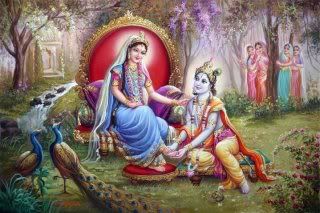


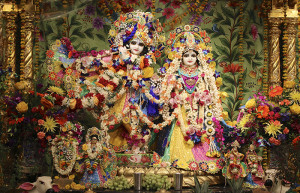
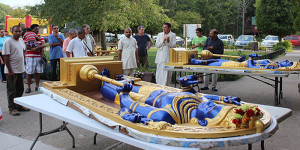
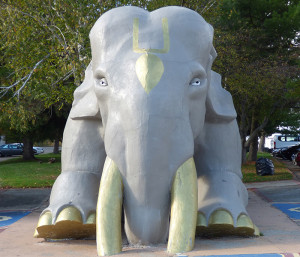



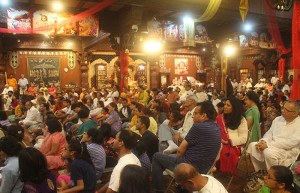





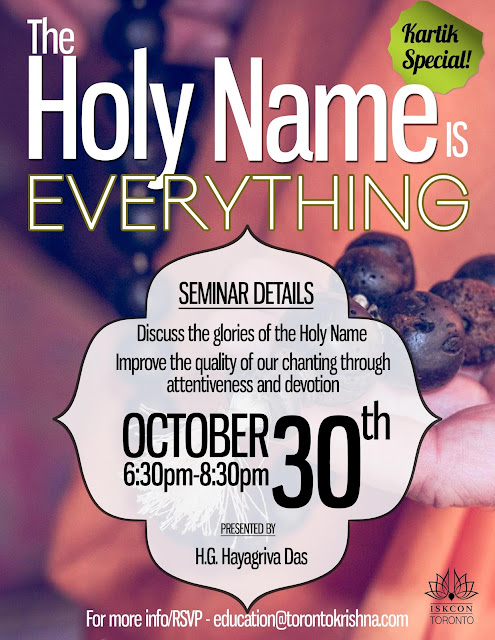




 The Swarna Hamsa (Golden Swan) temple will be constructed on sixteen acres of land. The projected cost of the temple and surroundings is Rupees two hundred crores.
The Swarna Hamsa (Golden Swan) temple will be constructed on sixteen acres of land. The projected cost of the temple and surroundings is Rupees two hundred crores.

